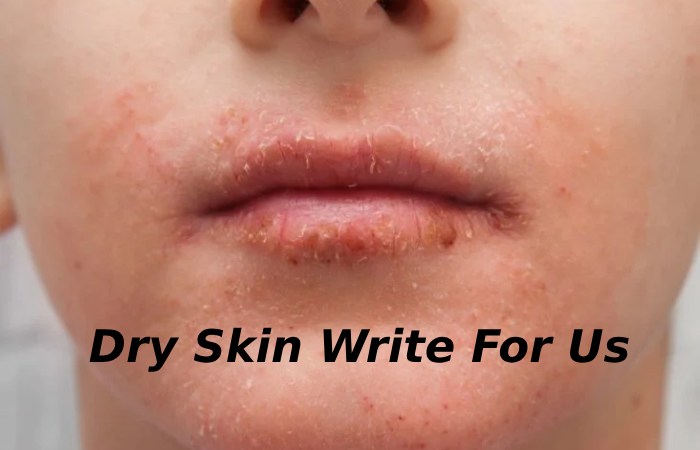Dry Skin Write For Us
Dry Skin, called Xerosis in medical terms, is a condition in which the Skin appears cracked, rough, aged, tight, scaly, and less elastic. The prevalence of Xerosis increases physiologically with age, but it can also manifest different diseases of the entire human organism, whether cutaneous or systemic.
Glamor Genix is a stylish portal for women – focused on providing beauty, fitness, and wellness tips. This portal will help improve their attractiveness and gain more knowledge about health and well-being. This definition can increase women’s self-confidence.
Glamor Genix.com is not a faceless, computerized bot. We are a real community run by real people, and we at glamorgenix.com care about your ideas, feedback, and questions. We provide opportunities for guest posting on contact@glamorgenix.com
What is the Main Symptom of Xerosis or Dry Skin?
Based on the fact that a symptom is a personal sign that helps to reveal a disease, we can say that the main symptom of Xerosis is pruritus.
In any case, it must take into account that although pruritus in the absence of a noticeable skin rash is a typical symptom of Xerosis, it does not mean that it is only related to Xerosis since pruritus is a non-specific symptom that can be present in many entities.
What happens at the Microscopic Level in Xerosis?
The most superficial part of the skin, the epidermis, is made up of four layers (five on the palms and soles) that are constantly evolving and maturing and which, in turn, are intimately connected and communicated with each other and with the underlying skin structures through specific molecules and substances, which are of increasing importance for the understanding of different skin pathologies.
In Xerosis or Dry Skin, there is an alteration of both the cellular elements of the skin and the concentration and formation of said substances, which together lead to the characteristic appearance of Dry Skin.
What Factors Condition Xerosis?
Three factors mainly condition the fact of having Dry Skin:
Environmental, chemical, and physical factors can produce Xerosis and are especially important in its prevention and stabilization.
How to Submit Your Articles?
E-mailing us at contact@glamorgenix.com is the fastest way to reach us.
Why Write for Glamour Genix – Dry Skin Write For Us
 Writing for Glamor Genix can expose your Website to customers looking for a Dry Skin.
Writing for Glamor Genix can expose your Website to customers looking for a Dry Skin.- Glamor Genix’s presence is on Social media, and they will share your article with the Dry Skin-related audience.
- You can reach out to Dry Skin enthusiasts.
Search Terms Related to Dry Skin Write For Us
- How to treat Dry Skin on the face
- Why is my Skin so dry and smooth when I dampen
- How to remove internal dryness from the body
- Dry Skin treatment at home
- Extremely Dry Skin on the face
- What causes Dry Skin
- What causes Dry Skin on the face
- Dry, flaky Skin
- How to cure Dry Skin on the face instant
- Home medications for Dry Skin on the face
- How to restore Dry Skin on the face overnight home remedies
- Why is my Skin so dry even when I dampen
- How to get clear of dry, peeling Skin on the face instantly
- Dry skin on the face
- Causes of dry skin all over body
- How to treat dry skin on face
- Dry skin symptoms
- Eczema dry skin
- Why is my skin so dry and flaky all of a sudden
- Dry skin on legs
- What causes dry skin on legs
Search Terms for Dry Skin Write For Us
Write For Us Dry Skin
Contribute Dry Skin
Dry Skin Submit Post
Dry Skin to submit an article
Guest author Dry Skin
Dry Skin Write For Us
Dry Skin Guest Post
Become a guest blogger on Dry Skin
Dry Skin writers wanted
Dry Skin suggests a post
Submit Post Dry Skin
Guest Post-Dry Skin
Article Guidelines on Glamor Genix – Dry Skin Write for Us
- Glamor Genix welcomes fresh and unique content related to Dry Skin.
- Glamor Genix allows at least 500+ words related to Dry Skin.
- The editorial team of Glamor Genix does not inspire promotional content related to Dry Skin.
- For publishing an article at Glamor Genix, please e-mail us at contact@glamorgenix.com
- Glamor Genix allows articles associated with Beauty and Fashion, Skin, Fitness, Lifestyle, make-up, Products,
Related Pages –
Dark Spots Write For Us and Guest Blog Submission
Acne Studios Write For Us and Guest Post
Beauty Write For Us – Guest Post, Contribution, And Submit Post

